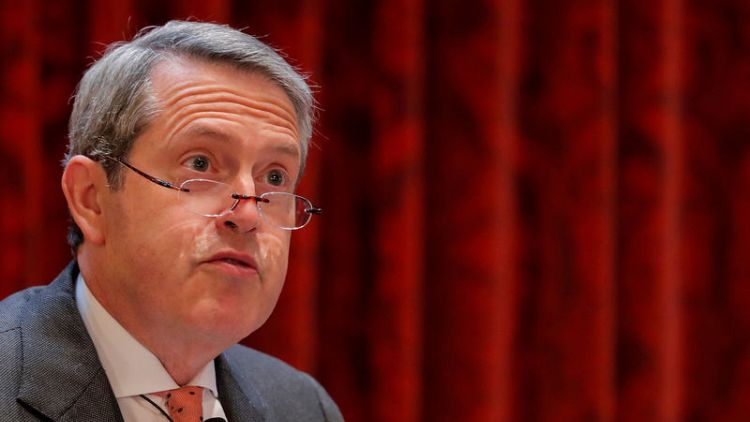WASHINGTON (Reuters) - Federal Reserve vice chairman Randal Quarles said the Fed's increasing "data dependence" does not mean it will react to every rise or fall in economic statistics or markets, but only to "significant changes in direction."
After a week in which markets have swung in their interpretation of where the Fed is heading, Quarles appeared to anchor the Fed's ongoing move towards slow but steady interest rate increases.
"We should be data dependent but not reacting to every wavering of the needle across the dial...We have described in all the communications tools a path that is pretty clear," Quarles said. "We are following a strategy and taking account of data over time as it comes in and in response to significant changes in direction."
That path currently has the Fed raising rates later this month and throughout 2019, an interpretation some investors have called into question given the recent focus of policymakers on weakening global growth and other recent data.
Stock markets in particular rose dramatically last week after construing remarks by Fed chair Jerome Powell to mean that the central bank may be nearer than thought to pausing the cycle of rate increases it began in late 2015.
Yet the signals are far from clear as Fed officials, for example, weigh how dropping oil prices may influence their progress in sustaining 2 percent inflation, and how to assess a renewed narrowing in the gap between short and long term bond rates. The gap between 10 year and 2 year Treasury securities on Monday at had fallen back to around 18.5 basis points, the lowest since July 2007, months before the official start of a deep recession.
Yet Quarles, Powell and other Fed leaders in their recent comments have said the recovery remains on track and the economy strong.
Economic data released on Monday presented a mixed picture.
The announcement of a "truce" in the tug of war over tariffs between the U.S. and China cleared one major risk facing the Fed, at least for now, and U.S. markets jumped on the news. A survey of company purchasing managers, in addition, pointed to a jump in manufacturing, and showed that "things are rolling along smoothly," wrote Michael Montgomery, U.S. economist for HIS Markit.
Yet some analysts on Monday marked down their forecasts for economic growth when construction spending registered a third consecutive monthly decline. A jobs report this Friday will provide a critical read on hiring, wages, and other core data ahead of the Fed's scheduled policy meeting on Dec. 18 and 19.
Quarles, in his comments, said the focus should be on the Fed's strategy of moving monetary policy back to normal, and said Fed officials would have to feel their way to that point by looking at how the economy behaves -- not at any particular estimate of a conceptual guidepost like the "neutral" rate of interest.
Repeating what has become a theme of the Powell Fed, Quarles said he feels estimates of neutral become less useful as a guide to policy or a communications tool as economic conditions become more normal.
His comments, after weeks in which markets have both dropped dramatically and then climbed based on perceptions of where rates are in comparison to "neutral," are part of Powell's so far choppy effort to downplay the concept -- discounting its usefulness but then continuing to refer to where policy stands in relation to it.
(Reporting by Howard Schneider; Editing by Chizu Nomiyama)



